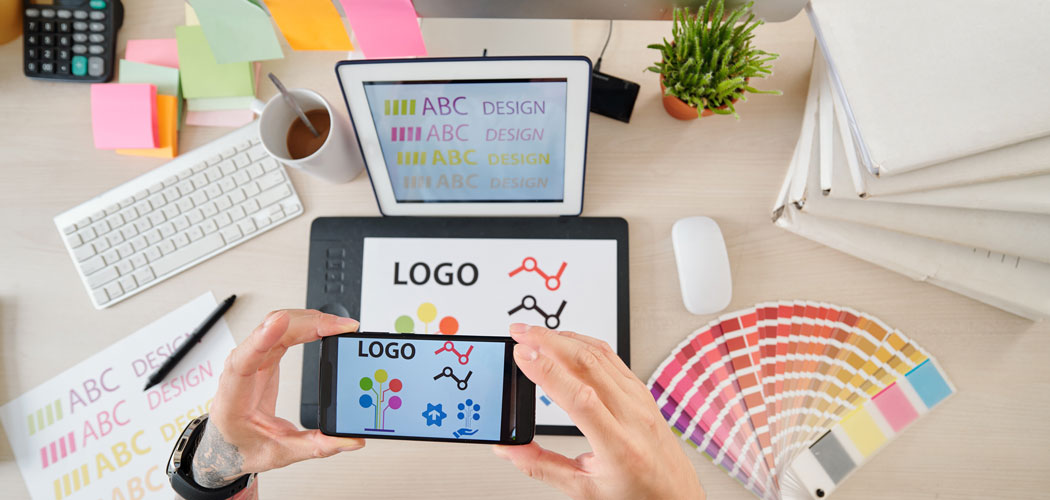
Logo design is a critical aspect of building a brand identity that resonates with your audience. It’s more than just a visual representation; it’s the face of your business.
As professional logo designers, we’ve witnessed the power a well-crafted logo holds in conveying a brand’s values and making a lasting impression.
In this article, we’ll discuss five crucial dos and five common pitfalls, or don’ts, in the world of logo design.
But first, what is a logo? And why is it so important for brands and businesses?
What is a Logo? Why is a Logo Important?
A logo is a visual representation that encapsulates the identity of a brand or business. It is a symbol, often comprised of unique shapes, colours, and typography, crafted to convey the essence of the company it represents.
Beyond a mere graphic, a logo serves as a powerful tool for brand recognition, fostering a connection between a business and its audience.
The importance of a logo lies in its ability to communicate the values, personality, and professionalism of a brand succinctly. A well-designed logo creates a memorable visual imprint, aiding consumers in identifying and recalling a business amidst a sea of competitors. It acts as a visual ambassador, speaking volumes about the company’s credibility and establishing a sense of trust with the audience.
Furthermore, a logo is a versatile asset, leaving its mark across various mediums such as business cards, websites, advertisements, and packaging. Its consistent presence reinforces brand cohesion, contributing to a unified and strong visual identity.
In essence, a logo is the face of a brand, making the first and lasting impression on consumers. Its importance extends beyond aesthetics, playing a pivotal role in shaping the perception of a business and influencing consumer behaviour.
So, now we understand the importance of a good logo, let’s jump into the do’s and don’ts when it comes to logo design.
The Dos:
Research Your Audience and Competition:
- Do: Before you even put pen to paper or cursor to screen, invest time in understanding your target audience and analysing your competitors. What appeals to your demographic? What sets your competitors’ logos apart? This research will lay the foundation for a logo that not only stands out but also connects with the right people.
Why: Knowing your audience’s preferences and understanding the existing landscape ensures that your logo is relevant and distinctive. It prevents unintentional similarities with competitors and helps you create a design that captures the essence of your brand.
Keep it Simple:
- Do: Simplicity is key in logo design. A clean, uncomplicated logo is not only visually appealing but also memorable. Aim for a design that can be easily recognised and understood at a glance.
Why: Simple logos are versatile and more likely to leave a lasting impression. They are easier to reproduce across various mediums, ensuring consistency in your brand’s visual identity.
Focus on Scalability:
- Do: A successful logo should be scalable without losing its essence. Whether displayed on a billboard or a business card, your logo should remain clear and recognisable at any size.
Why: Scalability is crucial for maintaining visibility and impact across different platforms and materials. A well-designed logo adapts seamlessly to various dimensions without sacrificing its visual integrity.
Choose Appropriate Colors:
- Do: Colors evoke emotions and play a significant role in brand perception. Choose a colour palette that aligns with your brand personality and resonates with your target audience.
Why: Colors can convey meaning and trigger specific emotions. For example, blue may evoke trust and professionalism, while red can signify energy and passion. Consistency in colour choice strengthens brand recognition and association.
Ensure Timelessness:
- Do: Trends come and go, but a timeless logo endures. While it’s tempting to incorporate the latest design trends, consider the long-term implications. Aim for a design that remains relevant and doesn’t require frequent updates.
Why: A timeless logo provides stability and continuity, contributing to the establishment of a strong brand identity. It prevents the need for frequent rebranding efforts and maintains the trust of your audience over time.
The Don’ts:
Avoid Overly Complex Designs:
- Don’t: Intricate details and overly complex designs can overwhelm and confuse viewers. Avoid clutter and excessive ornamentation that may dilute the impact of your logo.
Why: Complexity hinders recognition and can be challenging to reproduce accurately across different mediums. A simple, straightforward design ensures clarity and memorability.
Say No to Clip Art:
- Don’t: Using clip art or generic templates may save time, but it sacrifices originality and uniqueness. Your logo should be a one-of-a-kind representation of your brand.
Why: Clip art can be generic and lacks the personalised touch needed to convey your brand’s specific values. Investing in a custom design ensures a logo that truly reflects your business identity.
Don’t Rely on Trends Alone:
- Don’t: While incorporating current design trends can add a contemporary touch, relying solely on trends can result in a logo that quickly becomes outdated.
Why: Trends fade, and a logo designed solely based on what’s popular at the moment may require frequent updates, leading to brand inconsistency and potential confusion among your audience.
Avoid Unreadable Fonts:
- Don’t: The choice of font is critical in logo design. Avoid overly elaborate or unreadable fonts that can compromise the legibility of your logo.
Why: A logo’s primary purpose is to communicate your brand name or message. If viewers struggle to read your logo, it defeats the purpose and diminishes brand recall.
Steer Clear of Imitating Competitors:
- Don’t: While researching competitors is crucial, outright imitation is a pitfall to avoid. Your logo should be distinctive and unique to your brand.
Why: Imitating competitors diminishes your brand’s individuality and can lead to legal issues. Originality in design is key to standing out in a crowded marketplace.
What To Think About When Designing a Logo
Effective logo design requires a delicate balance of creativity, research, and strategic thinking. By adhering to these dos and avoiding common pitfalls, you can create a logo that not only captures the essence of your brand but also leaves a lasting impression on your audience.
Remember, a well-designed logo is an investment in the long-term success and recognition of your business. Consider contacting a graphic design company for your logo design, or follow our tips above to create the perfect design for your brand.





